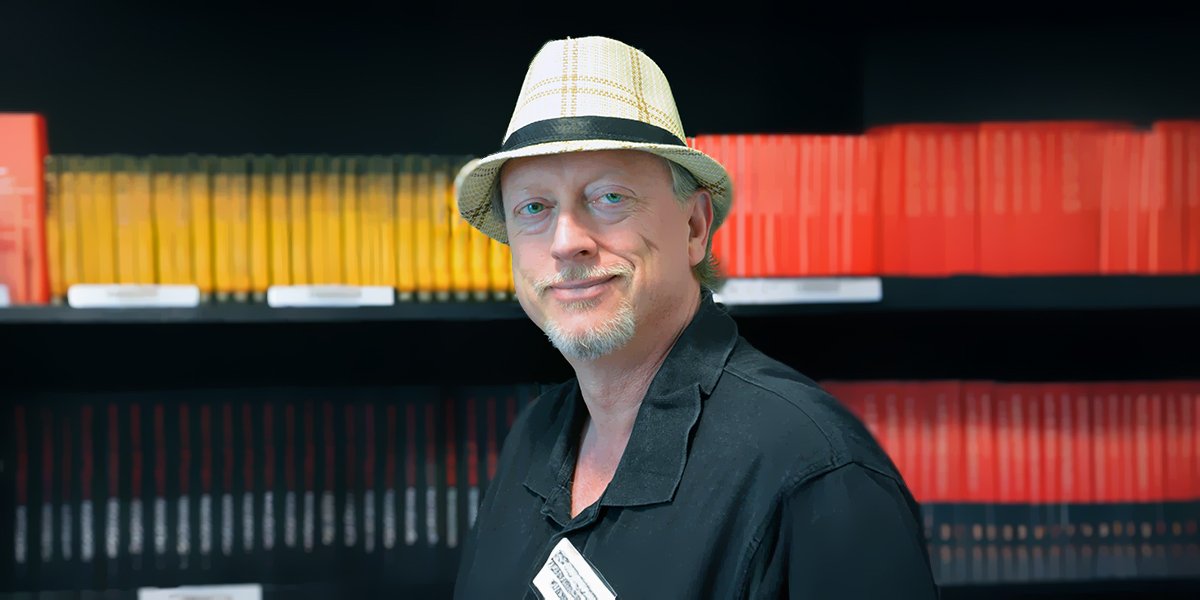The Mastermind Behind Iconic Novels And Film Adaptations
Tim Waggoner shares insights on writing horror, the challenges of media tie-ins, and advice for aspiring writers in the genre.
Tim Waggoner is a prolific writer whose journey in the world of horror and dark fantasy began with a deep passion for the genre. Since his debut novel in 2001, he has written over sixty novels and eight collections of short stories. His work spans both original fiction and media tie-ins, including notable projects based on iconic franchises like Supernatural, The X-Files, and Alien. A master of the craft, Waggoner is also an acclaimed author of writing guides, with his books Writing in the Dark and Writing in the Dark: The Workbook both winning Bram Stoker Awards. In this exclusive interview, we delve into his creative process, the challenges of media tie-ins, and his invaluable advice for aspiring writers in the horror and fantasy genres.
A captivating and insightful conversation with a true horror legend, offering invaluable advice and a peek into the creative process.
What initially drew you to writing horror and dark fantasy, and how has your approach evolved over the years?
Those genres have always stimulated my imagination more than any others, first as a reader and viewer, then later as an artist. Like most writers of horror and dark fantasy, I began by using basic tropes such as vampires, ghosts, serial killers, etc. in my fiction. As time went on, I began drawing on my own fears and observations of weird and bizarre stuff, and I started drawing more on my own personal experiences, even if I disguised them in my stories.
You’ve written both original fiction and media tie-ins—how do the creative challenges differ between the two?
In original fiction, you’re writing your story. You’re the boss and you can do whatever you want. With media tie-ins, the IP holder is the boss and you’re a hired hand. You have all kinds of restrictions and limitations, plus you need to replicate the feel of the original property. For example, Oz, Middle Earth, Narnia, Hyborea, and Westeros are fantasy worlds, but the style of stories, the types of characters, and the events that take place in those settings are very different. You also need to be aware of fan expectation without being beholden to it, and that can be a tricky balance to pull off. The IP holder has input into your initial idea and draft, and they provide revision suggestions along the way, and they must approve your final draft. You may end up doing more revision that you might normally, and you may have to make changes that you don’t always agree with.
Your book Writing in the Dark is highly regarded among horror writers. What’s the most common mistake you see new horror writers make?
Not writing with an immersive point of view. New writers often write from the perspective of an audience member watching a movie. They’re outside their characters instead of inside them and write with a distant point of view. Writers should imagine they are they viewpoint character in a scene and portray what the character is thinking and feeling – mentally, emotionally, and physically – as the action progresses. This sort of immersive writing works for any fiction, but it’s vital in horror when you really want to involve your readers.
You’ve written novelizations of films like Halloween Kills and Resident Evil: The Final Chapter. What’s the process like for adapting a film into a novel?
In a way, you’re like another director handed a script and asked to develop it into a finished work. You don’t get to see the movie ahead of time, so you only have the script to go by. You need to get into the characters’ heads in a way film can’t, and since movie scripts all by themselves only result in a 40,000-word story, you need to invent about 40,000 words of material in order to make a full novel.
Many of your works explore cosmic horror elements. What do you find most compelling about this subgenre?
It speaks to the biggest questions humanity has. Are we alone in the universe? Does existence have any kind of meaning? Are there superior beings, and if so, are they benign or malevolent or even sane? What is reality? Is it set and orderly or fluid and chaotic? I once read a quote by Charles Fort that sums it up well: “If there is a true universal mind, must it be sane?” I can’t think of any possibility more terrifying. Creatively, reality being fluid allows me to be much more creative with a story. I’m not bound to reality’s rules, and that allows me to write the kind of nightmare horror I enjoy the most.
You’ve been a professor for many years—how has teaching creative writing influenced your own work?
I once read another quote (I can’t remember from who) that basically said the best teachers know how to do a thing, they understand how they do that thing, and they can help others do that thing. Going through that three-step process helps you learn your subject (in my case, writing) so much deeper than you might otherwise, and it feeds back into your own work, helping you continuously grow.
What’s the best piece of advice you’d give to aspiring horror and fantasy writers looking to establish themselves?
Write the stories only you can tell. Work on developing your own voice – your own subject matter and writing style. Even if you’re working solidly in a specific genre, say middle-grade ghost stories, you need to find a way to make your work stand out from the pack. Writing your middle-grade ghost stories is how you do that. This process may take time and experimentation – not to mention patience on your part – but it’s vital if you don’t want your fiction to be generic and forgettable.


